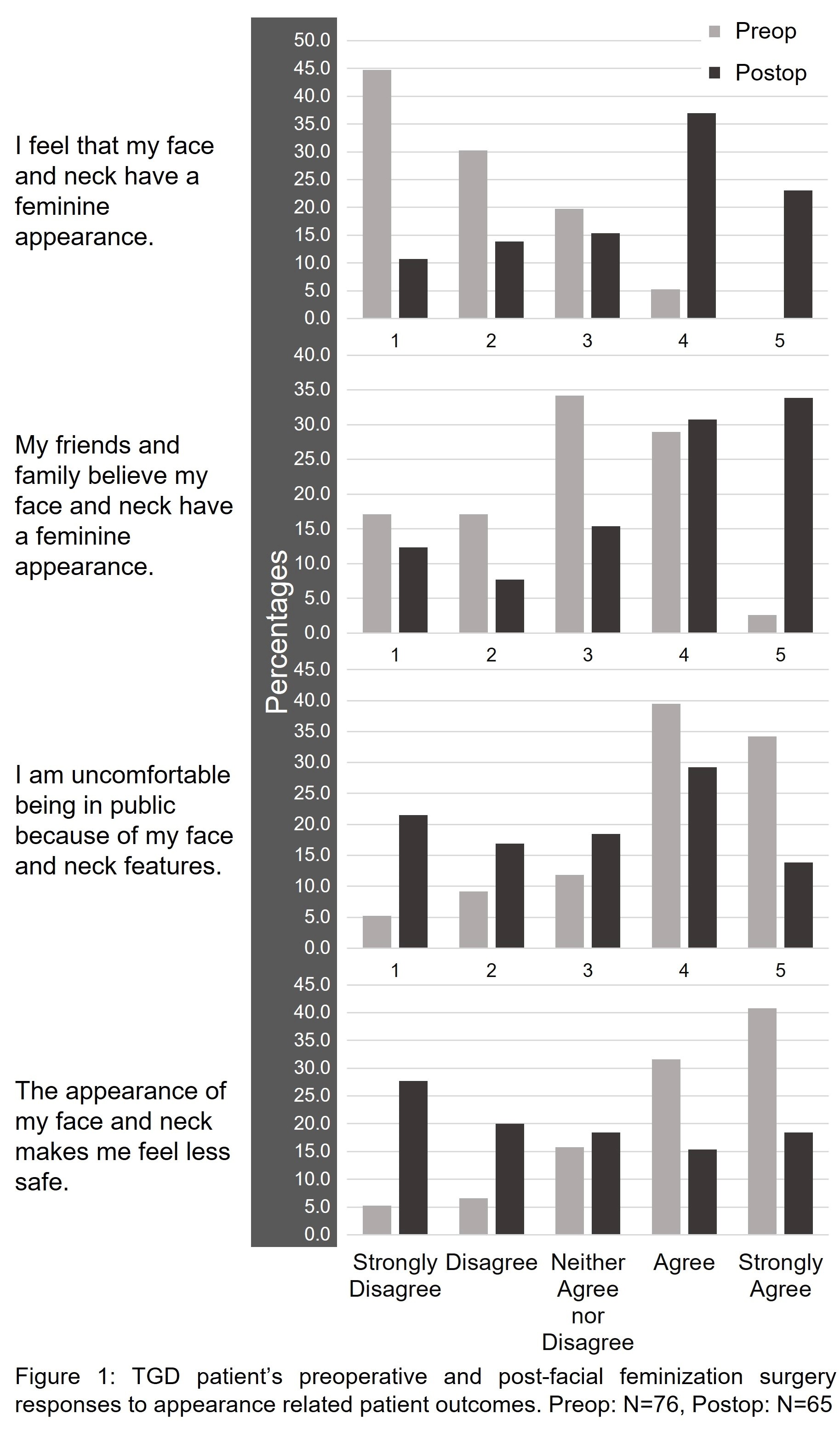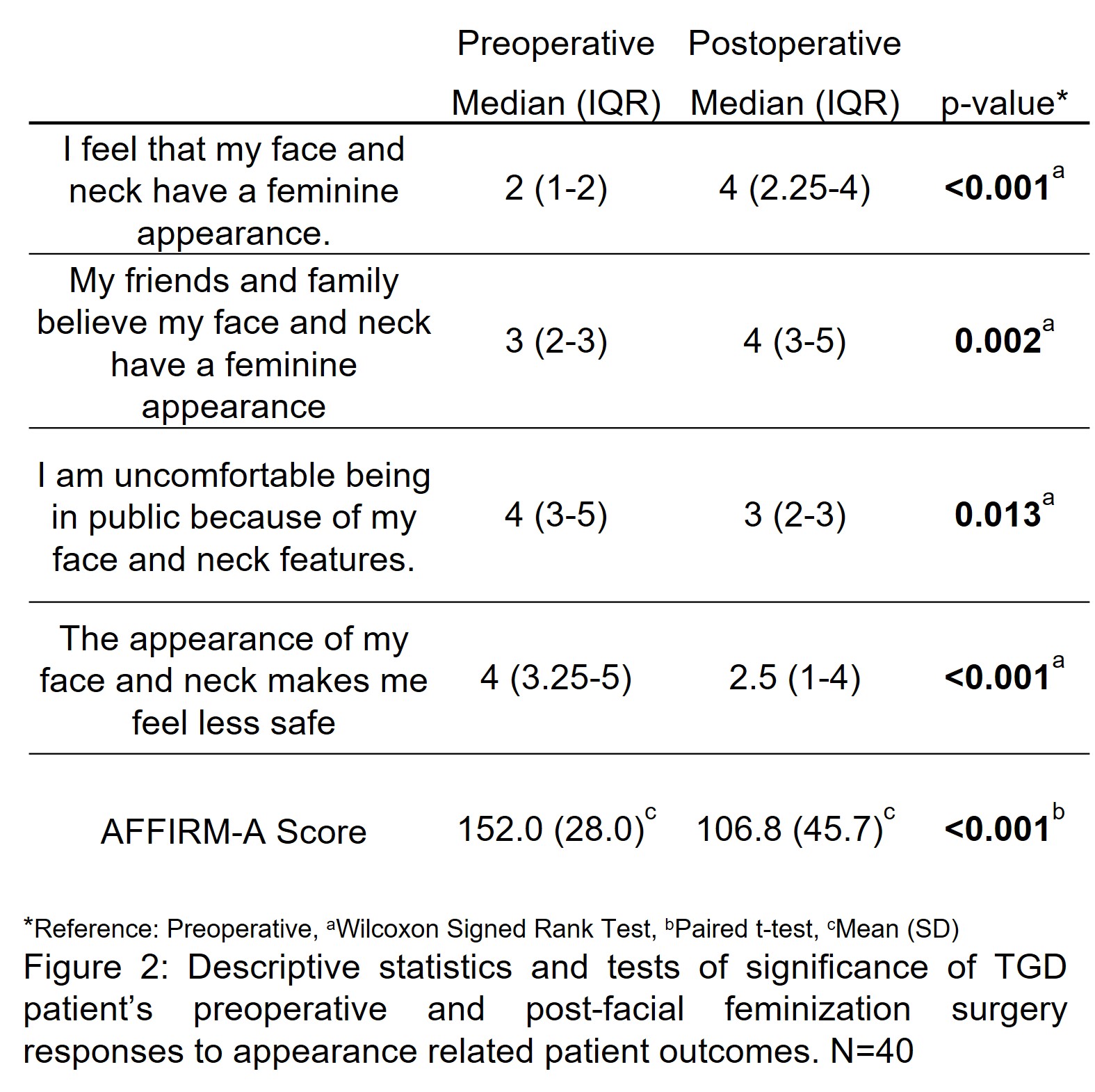An Assessment of Patient-Reported Outcomes Related to Appearance Following Facial Feminization Surgery in Transgender and Gender Diverse Patients
Justin James1, Uchechukwu Amakiri2, Felix Contreras-Castro3, Subha Karim3, Joshua D. Safer3, John H. Pang3
1CUNY School of Medicine, New York, NY; 2Icahn School of Medicine at Mount Sinai, New York, NY; 3Mount Sinai Center for Transgender Medicine and Surgery, New York, NY;
Background: With increasing number of transgender and gender diverse (TGD) people seeking gender affirming surgery, there is a paucity of data on outcomes measured by specifically trans-validated tools after facial feminization surgery. We therefore sought out to report these outcomes in TGD patients using a trans-validated questionnaire.
Methods: Using the Post-Affirming Surgery Form and Function Individual Reporting Measure (AFFIRM), a validated patient-reported outcome questionnaire, TGD patients were surveyed preoperatively and postoperatively at 3 time points. Patients were surveyed about their appearance and answered questions using a 5-point Likert Scale (1-Strongly Disagree, 2-Disagree, 3-Neither Agree nor Disagree, 4-Agree, 5-Strongly Agree). Data were analyzed using the Wilcoxon Signed Rank Test in IBM SPSS Statistics and results were considered significant if p<0.05. The latest postoperative responses were used as the postoperative measurements for each patient. Descriptive statistics were reported as percentages, medians, and interquartile ranges (Median, IQR).
Results: This study included 76 preoperative responses and 65 postoperative responses, comprising of 40 patients with paired preoperative and postoperative responses. Of the individuals with paired responses, 47.5% identified as White, 30% other, 20% African American, 2.5% American Indian or Alaskan, 65% Non-Hispanic, 27% Hispanic, and 97.5% lived in the Northeast United States. After facial feminization surgery, 63% of TGD patients (4, 2.25-4) felt their face/neck had a feminine appearance compared to only 3% (2, 1-2) of patients after surgery (p<0.001). In addition, 43% (2.5, 1-4) of patients felt comfortable in public because of this face/neck features post operatively compared to 18% of patients preoperatively (4, 3-5, p=0.013). After surgery, 50% (2.5, 1-4) of patients felt safe in public verse 10% of patients prior to surgery (4, 3.25-5, p<0.001). Lastly, 63% of patients felt their families and friends believed their face/neck had a feminine appearance (4, 3-5) post operatively compared to 23% (3, 2-3) of patients preoperatively (p=0.002).
Conclusion: This is the first study reporting that TGD patients report a significant positive change in their feelings related to the appearance of their face/neck following facial feminization surgery utilizing a trans-validated tool. Further studies should continue to utilize the AFFIRM questionnaire to garner information regarding patient reported outcomes in the TGD population as it does not use the cisgender population as the metric for satisfaction.
Back to 2022 Abstracts


